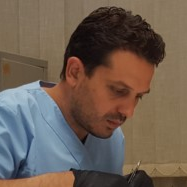Novel Technology in Poultry Production and Nutrition: Role in Disease Prevention, Performance and Welfare Improvement and Sustainability
A special issue of Animals (ISSN 2076-2615). This special issue belongs to the section "Poultry".
Deadline for manuscript submissions: 30 September 2024 | Viewed by 4186
Special Issue Editors
Interests: broiler; layer; breeder; health; welfare; feed technology; management technology; poultry pathogens
Special Issues, Collections and Topics in MDPI journals
Interests: broiler; layer; breeder; health; welfare; feed technology; management technology; poultry pathogens
Interests: animal nutrition; health; antioxidants; feed additives; aromatic and medicinal plants; alternative feedstuffs with bioactive compounds
Special Issues, Collections and Topics in MDPI journals
Special Issue Information
Dear Colleagues,
Rapid global population growth and rising incomes in developing countries have led to increased demand for protein, which is one of the most expensive and limiting feed ingredients. The poultry industry can play a key role in alleviating poverty as well as food scarcity as it can provide high-quality protein and nutrients for human consumption through meat and eggs. However, poultry protein must be produced in a way that promotes the health and welfare of the birds while being ethical and environmentally friendly. The poultry industry faces an ongoing challenge to apply novel technologies and develop management strategies to optimize chicken performance while minimizing food safety concerns. For example, the shift away from antibiotic use in poultry has led industry and academia to find alternatives to AGPs to improve bird health, welfare and performance as well as prevent and control enteric pathogens. In addition, increased consumer demand for "organic" poultry products is further forcing this industry to avoid the use of AGPs and to implement more environmentally and poultry-friendly management practices. Considering the shift away from the use of antibiotics in poultry feed and the impact of zoonotic agents on poultry, public and environmental health, a “One Health” approach should be adopted. Taking all the above-mentioned factors into account, a wide range of novel, alternative, environmentally friendly technologies in poultry production and nutrition should be developed. All these technologies in poultry production and nutrition bring new challenges and demand a holistic approach through novel feed strategies in order to minimize the impact on poultry health and welfare as well as to guarantee food safety and security for a growing human population. The purpose of this Special Issue is to provide current knowledge on novel technology in poultry production and nutrition with the potential for disease prevention, performance and welfare improvement, as well as to improve sustainability in poultry.
Dr. Vasilios Tsiouris
Dr. Georgios C. Papadopoulos
Dr. Ilias Giannenas
Prof. Dr. Paschalis Fortomaris
Guest Editors
Manuscript Submission Information
Manuscripts should be submitted online at www.mdpi.com by registering and logging in to this website. Once you are registered, click here to go to the submission form. Manuscripts can be submitted until the deadline. All submissions that pass pre-check are peer-reviewed. Accepted papers will be published continuously in the journal (as soon as accepted) and will be listed together on the special issue website. Research articles, review articles as well as short communications are invited. For planned papers, a title and short abstract (about 100 words) can be sent to the Editorial Office for announcement on this website.
Submitted manuscripts should not have been published previously, nor be under consideration for publication elsewhere (except conference proceedings papers). All manuscripts are thoroughly refereed through a single-blind peer-review process. A guide for authors and other relevant information for submission of manuscripts is available on the Instructions for Authors page. Animals is an international peer-reviewed open access semimonthly journal published by MDPI.
Please visit the Instructions for Authors page before submitting a manuscript. The Article Processing Charge (APC) for publication in this open access journal is 2400 CHF (Swiss Francs). Submitted papers should be well formatted and use good English. Authors may use MDPI's English editing service prior to publication or during author revisions.
Keywords
- broiler
- layer
- breeder
- health
- welfare
- feed technology
- management technology
- poultry pathogens








